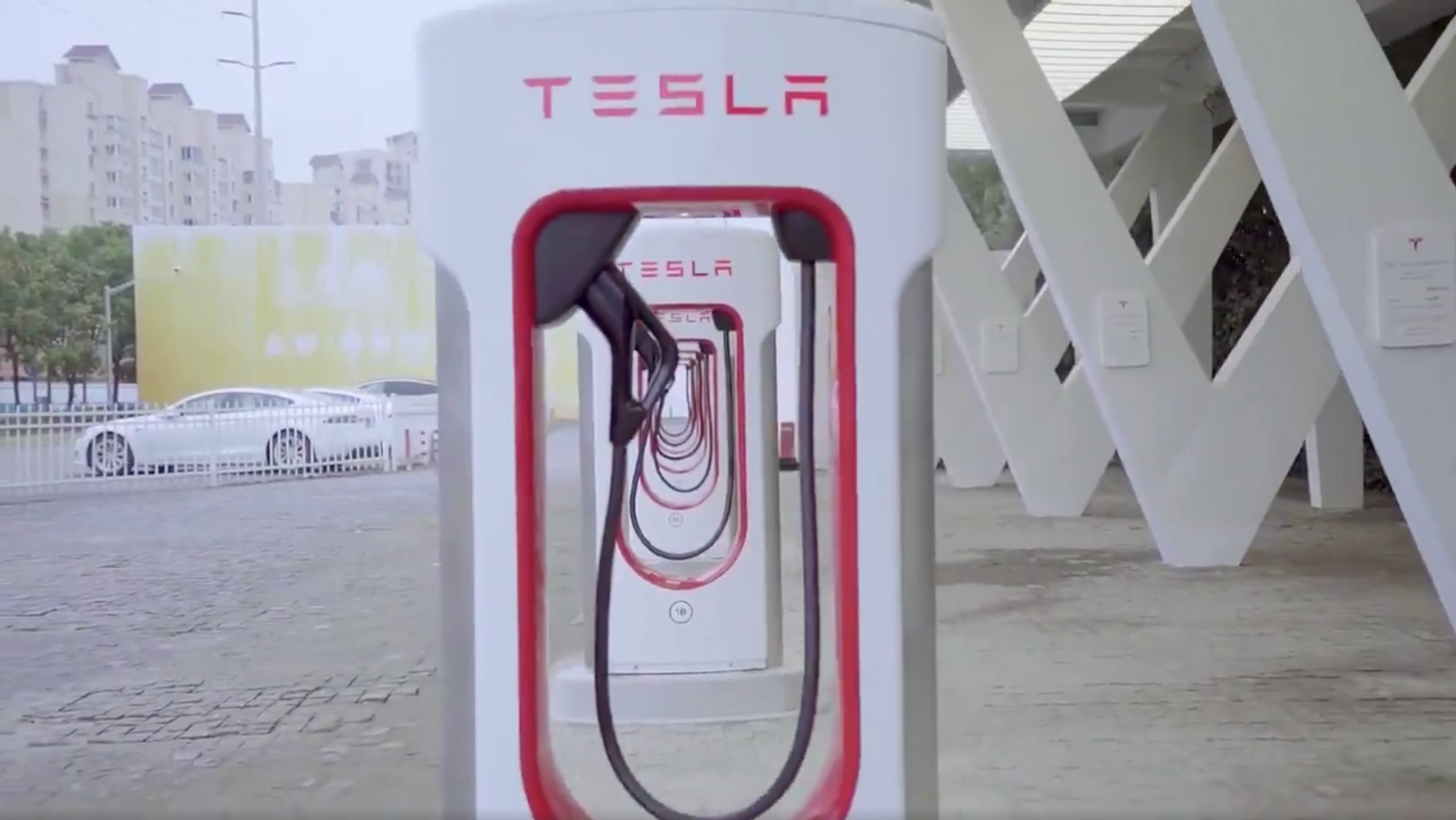
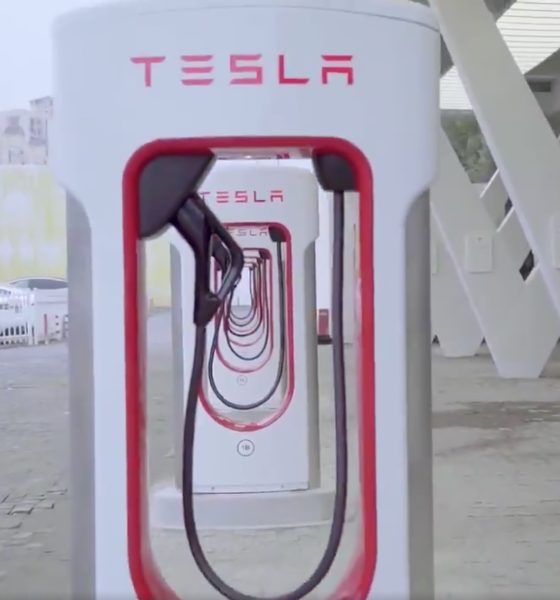
News
Tesla China VP breaks down Supercharging vs. Battery Swap debate
Tesla China’s Vice President of External Affairs Grace Tao broke down the advantages of Supercharging over battery swapping. Tao showed why Tesla had chosen a Supercharging network instead of battery swapping, which the automaker attempted several years ago.
“Recently, many friends are paying attention to whether Tesla will start the battery swap business. Thank you very much for your concern. As early as 2013, Tesla tried battery swap,” Tao said. “The battery swap mode is currently a good recharge mode in some specific areas such as taxis or buses, but we have always believed that the charging mode is the best for large-scale civilian electric vehicles. The way to supplement energy.”
Tao’s response could be coming from a report from Tianyancha from late February, where the media outlet reported that Tesla was adding a “new energy vehicle battery swap facility” in Shanghai, where its Chinese production plant is located. Tesla reps told the Beijing Business Daily (via BBT News) that the company would not be performing battery swaps. It would continue to use its Supercharging network across all of its vehicles for recharging. “Tesla will not change the battery,” the rep said, after indicating that swapping isn’t suitable for widespread use, nor was it effective as it was “riddled with problems,” according to Shine.
Tesla denies reports that it will use battery swapping techniques
Tao’s posting seems to portray the same message, showing that Tesla’s strategy for charging is to appeal to widespread use, for which Supercharging is more ideal. She used an analogy with Smartphones to further portray the advantage.
Tao added (via Weibo):
“You might recall that ten years ago, many electronic products we used removable batteries, and a mobile phone required two batteries. Nowadays, most electronic products such as mobile phones and computers have become integrated built-in batteries, and the way of supplementing energy has also changed from replacing batteries to high-power fast charging…Constantly increasing the layout of charging piles and improving charging efficiency at the same time, we think this is the best solution to users’ anxiety about charging…The national standard charging interface is consistent, which will greatly improve the efficiency of charging. Tesla’s latest V3 overcharge technology can replenish up to 250 kilometers of battery life within 15 minutes, and the time for a cup of coffee has basically met the electricity demand of a week in the city for commuting.”
Tesla last entertained the idea of battery swaps in 2015. A 2013 presentation by Elon Musk showed that battery swaps would be an ideal way to provide drivers with a full charge in virtually no time. The presentation by Musk showed a battery swap for a Tesla Model S would take less time than filling up an Audi A8 at a gas station, as the swap took only three minutes. Swapping, however, would require owners to pay fees, while Supercharging remained free.
The Harris Ranch Battery Swap Station in Coalinga, California, was Tesla’s first attempt at battery swaps. Despite the high demand for the service as reservations were highly concentrated, it also ended up being the only attempt thus far, as the station shut down in 2015. “Presently, the Battery Swap Program is not accepting any new requests for appointments,” Tesla said.
Tesla’s Supercharging initiative has accumulated 20,000 active Superchargers globally, with a brand new production facility recently opening up in China to handle growing demand in the region.

Elon Musk
Elon Musk proposes Grok 5 vs world’s best League of Legends team match
Musk’s proposal has received positive reception from professional players and Riot Games alike.

Elon Musk has proposed a high-profile gaming challenge for xAI’s upcoming Grok 5. As per Musk, it would be interesting to see if the large language model could beat the world’ best human League of Legends team with specific constraints.
Musk’s proposal has received positive reception from professional players and Riot Games alike, suggesting that the exciting exhibition match might indeed happen.
Musk outlines restrictions for Grok
In his post on X, Musk detailed constraints to keep the match competitive, including limiting Grok to human-level reaction times, human-speed clicking, and viewing the game only through a camera feed with standard 20/20 vision. The idea quickly circulated across the esports community, drawing commentary from former pros and AI researchers, as noted in a Dexerto report.
Former League pro Eugene “Pobelter” Park expressed enthusiasm, offering to help Musk’s team and noting the unique comparison to past AI-versus-human breakthroughs, such as OpenAI’s Dota 2 bots. AI researcher Oriol Vinyals, who previously reached Grandmaster rank in StarCraft, suggested testing Grok in RTS gameplay as well.
Musk welcomed the idea, even responding positively to Vinyals’ comment that it would be nice to see Optimus operate the mouse and keyboard.
Pros debate Grok’s chances, T1 and Riot show interest
Reactions weren’t universally optimistic. Former professional mid-laner Joedat “Voyboy” Esfahani argued that even with Grok’s rapid learning capabilities, League of Legends requires deep synergy, game-state interpretation, and team coordination that may be difficult for AI to master at top competitive levels. Yiliang “Doublelift” Peng was similarly skeptical, publicly stating he doubted Grok could beat T1, or even himself, and jokingly promised to shave his head if Grok managed to win.
T1, however, embraced the proposal, responding with a GIF of Faker and the message “We are ready,” signaling their willingness to participate. Riot Games itself also reacted, with co-founder Marc Merrill replying to Musk with “let’s discuss.” Needless to say, it appears that Riot Games in onboard with the idea.
Though no match has been confirmed, interest from players, teams, and Riot suggests the concept could materialize into a landmark AI-versus-human matchup, potentially becoming one of the most viewed League of Legends events in history. The fact that Grok 5 will be constrained to human limits would definitely add an interesting dimension to the matchup, as it could truly demonstrate how human-like the large language model could be like in real-time scenarios.
Tesla has passed a key milestone, and it was one that CEO Elon Musk initially mentioned more than nine years ago when he published Master Plan, Part Deux.
As per Tesla China in a post on its official Weibo account, the company’s Autopilot system has accumulated over 10 billion kilometers of real-world driving experience.
Tesla China’s subtle, but huge announcement
In its Weibo post, Tesla China announced that the company’s Autopilot system has accumulated 10 billion kilometers of driving experience. “In this respect, Tesla vehicles equipped with Autopilot technology can be considered to have the world’s most experienced and seasoned driver.”
Tesla AI’s handle on Weibo also highlighted a key advantage of the company’s self-driving system. “It will never drive under the influence of alcohol, be distracted, or be fatigued,” the team wrote. “We believe that advancements in Autopilot technology will save more lives.”
Tesla China did not clarify exactly what it meant by “Autopilot” in its Weibo post, though the company’s intense focus on FSD over the past years suggests that the term includes miles that were driven by FSD (Beta) and Full Self-Driving (Supervised). Either way, 10 billion cumulative miles of real-world data is something that few, if any, competitors could compete with.
Advertisement
–>
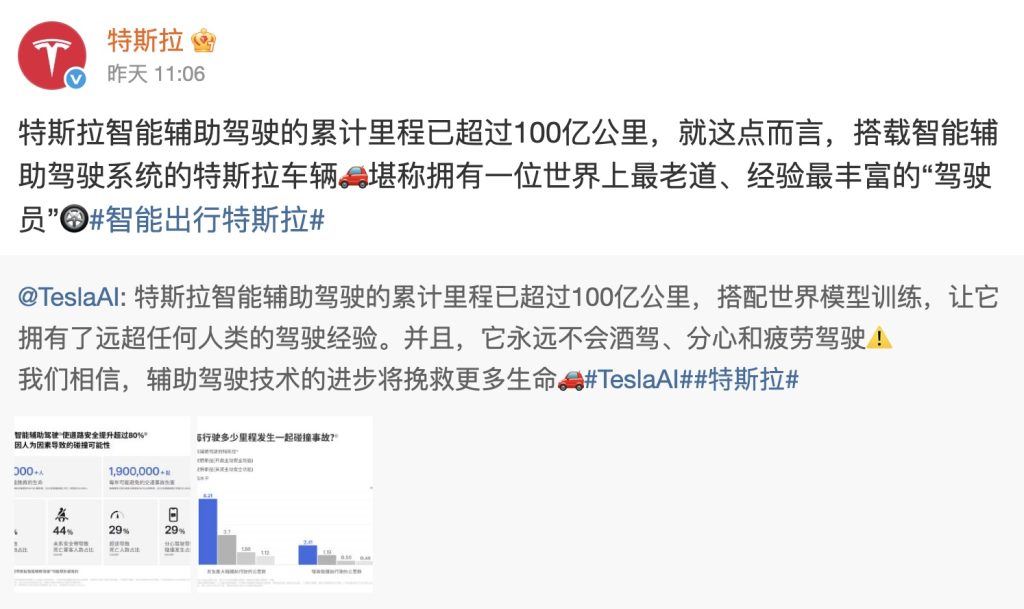
Elon Musk’s 10-billion-km estimate, way back in 2016
When Elon Musk published Master Plan Part Deux, he outlined his vision for the company’s autonomous driving system. At the time, Autopilot was still very new, though Musk was already envisioning how the system could get regulatory approval worldwide. He estimated that worldwide regulatory approval will probably require around 10 billion miles of real-world driving data, which was an impossible-sounding amount at the time.
“Even once the software is highly refined and far better than the average human driver, there will still be a significant time gap, varying widely by jurisdiction, before true self-driving is approved by regulators. We expect that worldwide regulatory approval will require something on the order of 6 billion miles (10 billion km). Current fleet learning is happening at just over 3 million miles (5 million km) per day,” Musk wrote.
It’s quite interesting but Tesla is indeed getting regulatory approval for FSD (Supervised) at a steady pace today, at a time when 10 billion miles of data has been achieved. The system has been active in the United States and has since been rolled out to other countries such as Australia, New Zealand, China, and, more recently, South Korea. Expectations are high that Tesla could secure FSD approval in Europe sometime next year as well.
News
Elon Musk’s Boring Company reveals Prufrock TBM’s most disruptive feature
As it turns out, the tunneling startup, similar to other Elon Musk-backed ventures, is also dead serious about pursuing reusability.
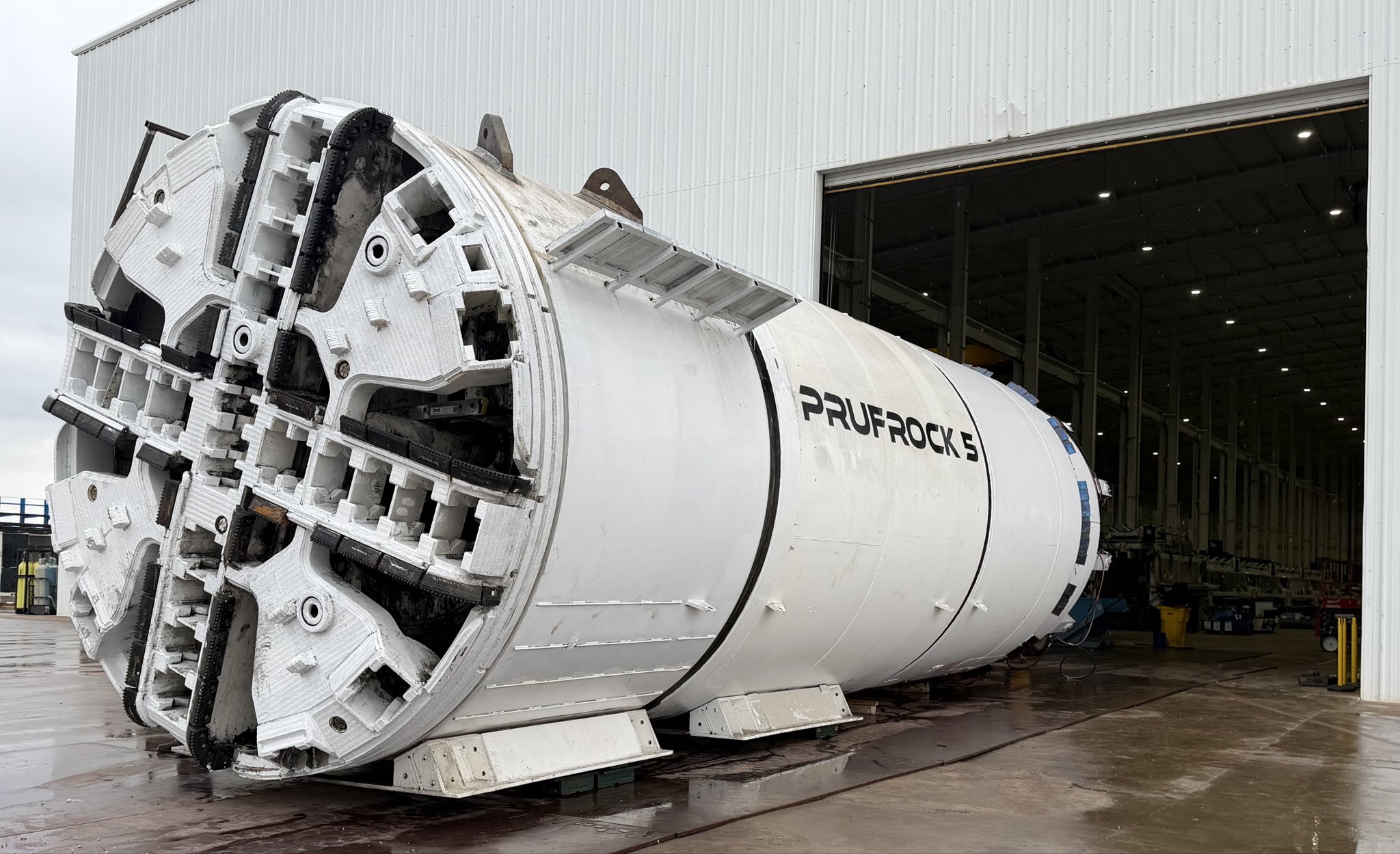
The Boring Company has quietly revealed one of its tunnel boring machines’ (TBMs) most underrated feature. As it turns out, the tunneling startup, similar to other Elon Musk-backed ventures, is also dead serious about pursuing reusability.
Prufrock 5 leaves the factory
The Boring Company is arguably the quietest venture currently backed by Elon Musk, inspiring far fewer headlines than his other, more high-profile companies such as Tesla, SpaceX, and xAI. Still, the Boring Company’s mission is ambitious, as it is a company designed to solve the problem of congestion in cities.
To accomplish this, the Boring Company would need to develop tunnel boring machines that could dig incredibly quickly. To this end, the startup has designed Prufrock, an all-electric TBM that’s designed to eventually be fast enough as an everyday garden snail. Among TBMs, such a speed would be revolutionary.
The startup has taken a step towards this recently, when The Boring Company posted a photo of Prufrock-5 coming out of its Bastrop, Texas facility. “On a rainy day in Bastrop, Prufrock-5 has left the factory. Will begin tunneling by December 1. Hoping for a step function increase in speed,” the Boring Company wrote.
Prufrock’s quiet disruption
Interestingly enough, the Boring Company also mentioned a key feature of its Prufrock machines that makes them significantly more sustainable and reusable than conventional TBMs. As per a user on X, standard tunnel boring machines are often left underground at the conclusion of a project because retrieving them is usually more expensive and impractical than abandoning them in the location.
As per the Boring Company, however, this is not the case for its Prufrock machines, as they are retrieved, upgraded, and deployed again with improvements. “All Prufrocks are reused, usually with upgrades between launches. Prufrock-1 has now dug six tunnels,” the Boring Company wrote in its reply on X.
The Boring Company’s reply is quite exciting as it suggests that the TBMs from the tunneling startup could eventually be as reusable as SpaceX’s boosters. This is on brand for an Elon Musk-backed venture, of course, though the Boring Company’s disruption is a bit more underground.
News
Tesla accused of infringing robotics patents in new lawsuit
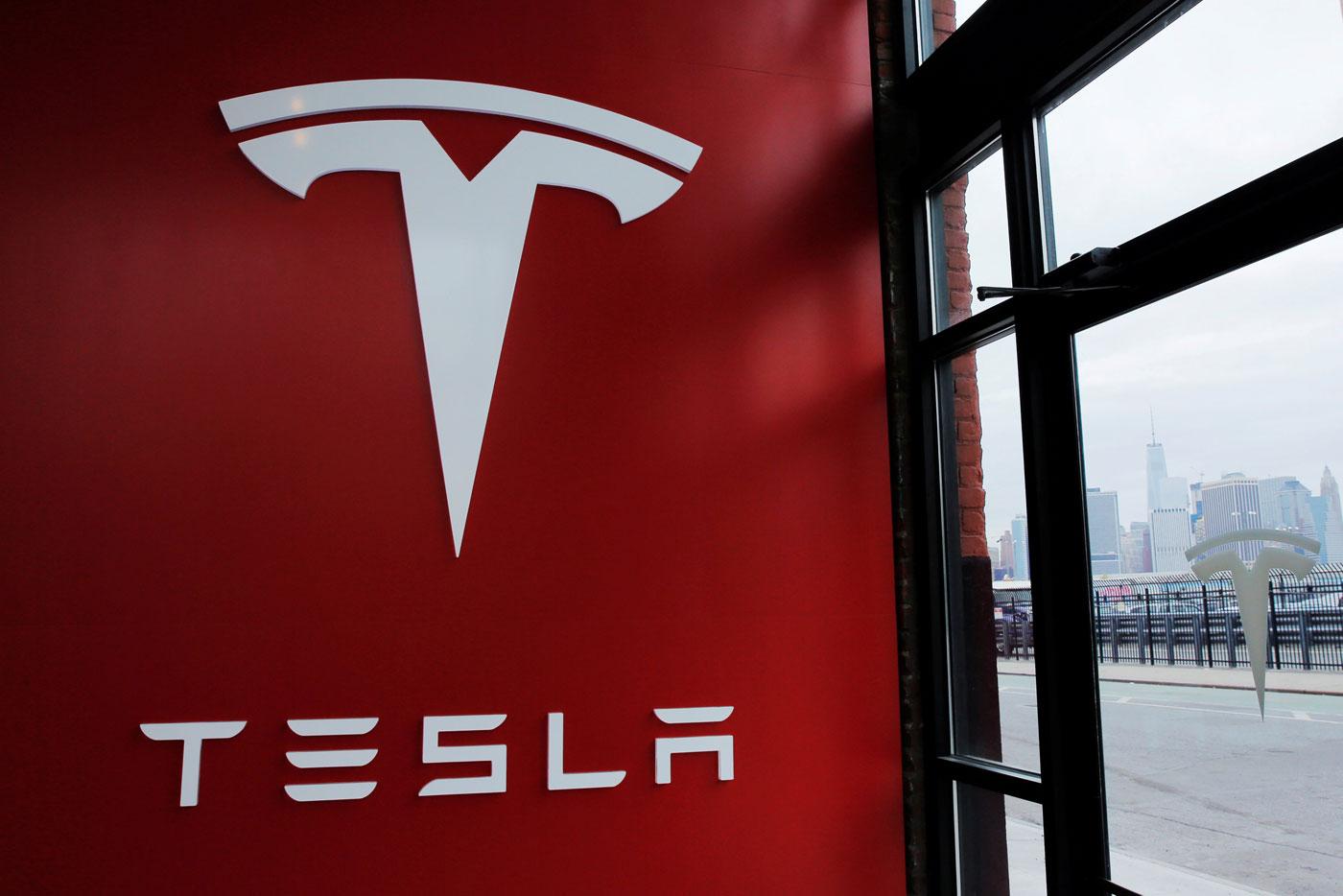
Tesla is being accused of infringing robotics patents by a company called Perrone Robotics, which is based out of Charlottesville, Virginia.
The suit was filed in Alexandria, Virginia, and accuses Tesla of knowingly infringing upon five patents related to robotics systems for self-driving vehicles.
The company said its founder, Paul Perrone, developed general-purpose robotics operating systems for individual robots and automated devices.
Perrone Robotics claims that all Tesla vehicles utilizing the company’s Autopilot suite within the last six years infringe the five patents, according to a report from Reuters.
Tesla’s new Safety Report shows Autopilot is nine times safer than humans
One patent was something the company attempted to sell to Tesla back in 2017. The five patents cover a “General Purpose Operating System for Robotics,” otherwise known as GPROS.
The GPROS suite includes extensions for autonomous vehicle controls, path planning, and sensor fusion. One key patent, U.S. 10,331,136, was explicitly offered to Tesla by Perrone back in 2017, but the company rejected it.
The suit aims to halt any further infringements and seeks unspecified damages.
This is far from the first suit Tesla has been involved in, including one from his year with Perceptive Automata LLC, which accused Tesla of infringing on AI models to interpret pedestrian/cyclist intent via cameras without licensing. Tesla appeared in court in August, but its motion to dismiss was partially denied earlier this month.
Tesla also settled a suit with Arsus LLC, which accused Autopilot’s electronic stability features of infringing on rollover prevention tech. Tesla won via an inter partes review in September.
Most of these cases involve non-practicing entities or startups asserting broad autonomous vehicle patents against Tesla’s rapid iteration.
Tesla typically counters with those inter partes reviews, claiming invalidity. Tesla has successfully defended about 70 percent of the autonomous vehicle lawsuits it has been involved in since 2020, but settlements are common to avoid discovery costs.
The case is Perrone Robotics Inc v Tesla Inc, U.S. District Court, Eastern District of Virginia, No. 25-02156. Tesla has not yet listed an attorney for the case, according to the report.








